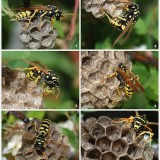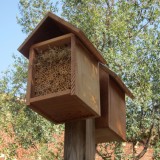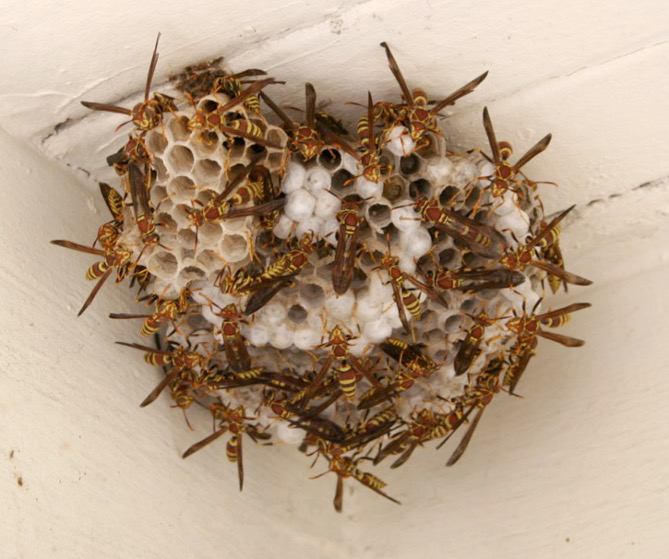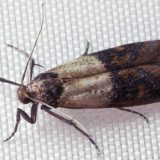
Speaking of astonishment, I learned something new last weekend, and I love learning new things, especially things which remind me of how strange and wonderful the world is.
Have you ever heard of an ant lion or antlion?
I was out tracking with the lovely Channel Islands Tracking Team (if you live near Ventura, CA and want to learn how to track animals for fun, look them up). We were under a tagged-up bridge, in a dry river bed. Someone pointed out a hole or divot in the sand and quizzed us: what made the hole? I had no idea. It was a divot that could have been made by a big man’s thumb. I might think it was made by dripping water, if there was ever any water anywhere in this dry land.
The answer was “ant lion” — and I was the only one among them who did not know the answer. Ant lion??? It was such as strange conjunction of terms (see jackalope) that I thought they were pulling my leg. When I got home and checked the Internets, I realized that, as always, truth is stranger than fiction.
The name ant lion is a simple translation of their genus name, Myrmeleon— “ant-lion”. Ant lion because they eat ants rather fiercely. This activity, and so the name, only applies to the larval stage of the insect. The larvae are also sometimes called “doodlebugs” in North America because of the linear, wandering trails they leave in the sand when not killing ants. Ant lions are found all over the world, in any region which has a dry, warm climate–and sandy soil.
Dry sand is necessary for their predation style. They dig holes in which to capture their prey. The hole I saw, like the hole above, is called a lion ant trap. (And a wicked trap it is! Arrggg matey!)
What dug the hole? This:

So, this creature digs sand pits and hides in the bottom of them waiting for a hapless ant to wander by. The ant slips on the crumbling edge of the pit and tumbles in. The ant lion is waiting in hiding at the bottom and may grab the ant when it first falls. If the ant is lucky enough to regain its feet and start out of the hole, the ant lion kicks sand at it, barraging the ant with heavy fire until it slides back down to the bottom of the death pit and is caught in those fearsome pincher jaws. There is no escape from the ant lion.
Cunning. Efficient. Voracious. This is the ant lion. This is a baby ant lion, the larval stage. It makes you shudder to think what it’s like when it’s grown up, right?
Behold the adult ant lion:

It looks like a damselfly or dragonfly but is not related to either. The adult ant lion is sometimes called an antlion lacewing. They are not much seen by humans, because despite those beautiful wings, they are weak fliers, and mostly lurch around in the bushes at night trying to find another bumbling antlion, so they can mate. In the daylight hours they rest on branches, where they are well camouflaged.
From pinchered, death pit-digging predator to delicate, bumbling, romance-seeking nectar drinker. You just never know where life will take you.

Thanks to Wikimedia Commons for all of the photographs in this post.





I wonder if they feed on those pesky, black Argentine ants that seem that seem to be omnipresent in Los Angeles County and are particularly troublesome for those of us who keep bees? From what I’ve read in the past, Argentine ants have no natural predators because of their high tannic acid content.
Are you thinking about keeping some pet ant lions? 😉
From what I know their primary food is ants, followed by spiders. I doubt they’d be picky about the Argentines.
My grandparents lived in Stockton when I was growing up. I visited them a handful of summers, and I remember my grandfather showing me one of these he kept in a big terracotta pot. He’d set me to work finding ants in the backyard to feed it. I always thought they were fascinating, especially as I never saw the actual ant lion, just the ant losing its footing in the sand cone, and eventually being dragged below the surface.
That is too funny. Apparently these guys can stay in their larval state (i.e. their murderous state) for up to three years, so they might indeed make a decent pet!
I can’t believe there wasn’t a single Star Wars: Return of the Jedi reference in this entire post!
Or a reference to Half-Life 2!
Wow–who knew? Looks like they have like a whole antlion army that needs killing. (Talking to me about video games is like talking to your grandma.)
Ah! I’d completely forgotten about Lucas’s vagina dentata. At first I was thinking, “What, because the antlion looks like a stubby at-at?”
As kids my brothers and I used to catch them. To catch an ant lion is somewhat like catching fish. You need a pine needle or some stiff piece of straw or hay. You use the pine needle, straw, or hay to harass the ant lion as in touch the sides of the trap and try to mimic a hapless ant. Then move the straw slowly down along the walls to the ant lion until it clamps hold of the straw and you pull it out of its hole but you have to be quick so that you can put it in a jar or some container that has no holes not even small holes. Anyway the number one thing you need is time and patients just like fishing. If you have none of these things I guess the other thing you could do is dig up the hole with a shovel or post-hole diggers but you may still lose the ant lion.
You say that the ant lion must be put in a jar without any holes, even small holes. Are they escape artists? They’re about a centimeter and a half, I believe?
No if the you put them in a box make sure the bottom of the box does not have openings where the folds are. Also Ant Lions can climb boxes but if you use a jar just leave the lid off and make sure the sides are smooth and tall enough that they can’t get out. Besides your only wanting to keep them long enough in the container so that you can look at them and release them or transport them to a new more fitting container like an ant farm container. They still have to be able to breath air so whatever you put them in cannot be air tight.
Ah ha–I misread — you said a jar OR a container with no holes. That makes much more sense!
We used to play with these at recess in elementary school in Riverside. I was just mentioning these the other day, after not even thinking about them, at least consciously, for a long time. But, since they are so awesome, they are probably always on my mind subconsciously. Whoever caught the most won!!!
It’s so cool that so many people have childhood memories of playing with ant lions. I think it is too cold for them in Colorado, where I spent my playground time, so they’re totally new to me.
So are they related to dragon flies?
Sorry to see this post so late but ant lions aka doodlebugs are lots of fun! We got one in at work and liked it so much we had to video it.
Enjoy!
https://www.youtube.com/watch?v=IbAMZrgnb1g
Very flippin funny. It lived in a bag for 3 months?!?! One of those months being in a glove compartment? Frankly I don’t blame it for eating its companion. What happened to it in the end?